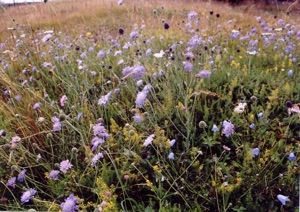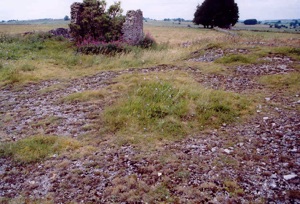Survey and conservation prioritisation of historic lead mine sites

In the Peak District region of northern England, centuries of mining veins of lead ore have resulted in distinctive hillocks and hollows that often run in lines across grazing lands. These areas (known locally as ‘lead rakes’) provide a habitat for unique plant communities.
All the materials that were of no use to the miners were cast aside as waste and the great variation in the size and composition of the waste mounds now allows lead rakes to support a complex mosaic of different vegetation types.
The toxic nature of some of the lead rake material results in distinct areas of specialised metalophyte (metal tolerant) vegetation. In the Peak District the toxic soils and varying topography of old lead workings support vegetation that has been recognised as internationally important by the European Habitats Directive - such as the specialised metal-tolerant plant community with abundant 'leadwort' (Minuartia verna) shown in the photograph above. Many of these sites now support important populations of nationally scarce species.
The sites are often extremely valuable from an ecological point of view as many different species with contrasting environmental requirements often grow in close proximity.
Study of the lead rake plant communities gives valuable insight into species ecology and community persistence, whilst investigation of the pollution-tolerant plant species can increase our understanding of how to clean and re-vegetate polluted land. Detailed survey and description of the mine remains and their plant communities remains an essential first step toward their conservation.
Related publications
Jump A, Penny B (2006). Lead rakes project. Flagg, Sheldon and Taddington Derbyshire: Technical report. Report to: Peak District National Park Authority and English Nature.
Jump AS (1998). Edaphic factors determining plant community composition on a metaliferous mine site on Bonsall Moor, Derbyshire, UK. Report to: Peak District National Park Authority (Ecology Service).


Many remaining examples of these specialised plant communities are under threat of destruction. The unimproved grassland communities are of low productivity and the hillocks make land management difficult with modern farm machinery. In recent decades, large areas have been removed for reprocessing of their mineral content, whilst others have been ploughed out or ‘agriculturally improved’ through the addition of fertilisers and herbicides.
For the last decade, growing importance has been placed on their conservation and educational programmes now raise awareness of their historic and botanical importance.
Species-rich grassland growing on old spoil heaps